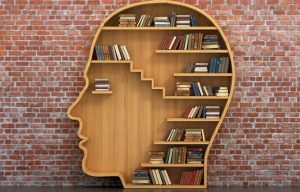New Unit Dec./Jan. and Year-Long Curriculum Information
Hello Everyone,
As communicated in the parent orientation and via the blog earlier this fall, we are continuing with our conceptual-based units throughout the year.
These units integrate all subjects and connect directly to the B.C. curriculum, whether through the big ideas, content, or curricular competency skill areas. The units also integrate curriculum from both the grade 4 and 5 years.
Given MACC students are with me for two years, I have created a program that runs over two years and does not repeat in terms of content. We do repeatedly practice skill areas, as they need practice for longer than just one year. Some skill areas they practice all the way through high school, too!
Our schedule for the year goes like this:
Term 1:
Unit 1 — Concept SYSTEMS, unit integrated around health and human body
Term 2:
Unit 2 — Concept CHANGE/CREATIVITY, unit integrated around technology/maker things
Unit 3 — Concept EXPLORATION, unit integrated around people/animal migration
Term 3:
Unit 4 — Concept STRUCTURE/ORDER, unit integrated around resources and needs/wants
Unit 5 — Concept CONNECTION/PATTERNS, unit integrated around space, stories, myths
Unit 6 — Independent Project (process happens throughout term 2 and 3, with presentation in June for the public)
For Term 2, here is our unit we began two and a half weeks ago!
See my Twitter feed for pictures of work we have already done so far!
Unit #2: Our Human Creations, December – Mid-January
CONCEPT: Change and Creativity
Unit Focus Statement: We use creativity and knowledge together to make innovations that change our world.
An Inquiry Into:
- Our learning and use of creative thinking (from the core competencies)
- Change and the design process
- Tools we can use to change the depth of our reading and writing
- Scientific forces and mathematical thinking behind our creations
- How innovations make change
- Using technology to learn or to create change
- Change in our lives, perspectives, thinking, and abilities
- How we can share our creative thinking with one another and the community
Some of the Specific Topics Covered In:
Science: Simple machines, Work, Center of Gravity, Technology, Early Indigenous Tools, Deciding which machine has had the greatest benefit/use, making catapults, creating hydraulic devices, Rube Goldberg devices
Socials: Technology and Society — Positive and Negative Impacts, History of Technology, Timelines, Critical Thinking About Our Technology Use, Creation of a Timeline, Debate on Impact of Video Game Use on Children
Math: Deeper Conversations around multiplication and division, Use of scientific formulas from physics around work and rate/distance/time, Basic Variables/Algebra, Area/Perimeter, Tiny House Creation, Math Used in Creating Buildings/Skyscrapers through the book “You Do the Math: Skyscrapers”
Language Arts: Creative Writing, Careful editing, use of non-fiction features in books to do research, organizing notes for research, using key words for internet searches, reading of City of Ember through the use of Reading Power.
Applied Design: Design Process steps used in the creation of catapults, “Perfect Square” structures, as well as discussions around how creative thinking can be learned. Creativity research study observing how younger children work with marble roller coaster creation.
French: Use of French-games.net to do a variety of vocabulary-building, independently-paced lessons. Students will do practice and assessments in class on vocabulary lists and phrases built from these activities.
Arts: Maker Projects, Musical Performance, Spindle Whorls and Coast Salish Art Forms, Not a Box Activity, Creative-Thinking Challenges, and continued talk about elements and principles of art.
Physical Education and Health: Movement activities focused around the quality of movement, dance moves, where we can find aerobic activities that get our heart pumping, and the creative choreography of our own dances to music. Also, brainstorming together creative options for cooperative play on the playground.
More updates to come as specific projects are introduced! Please ask if you have questions!
Ms. D

